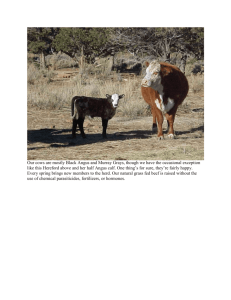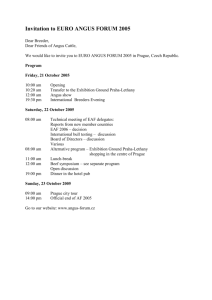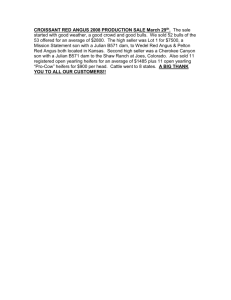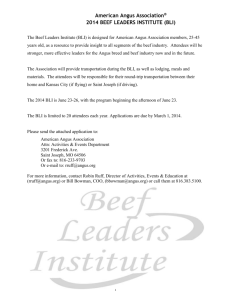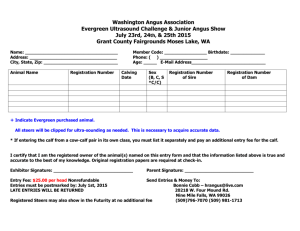US BEEF HERD GOING STRAIGHT
advertisement
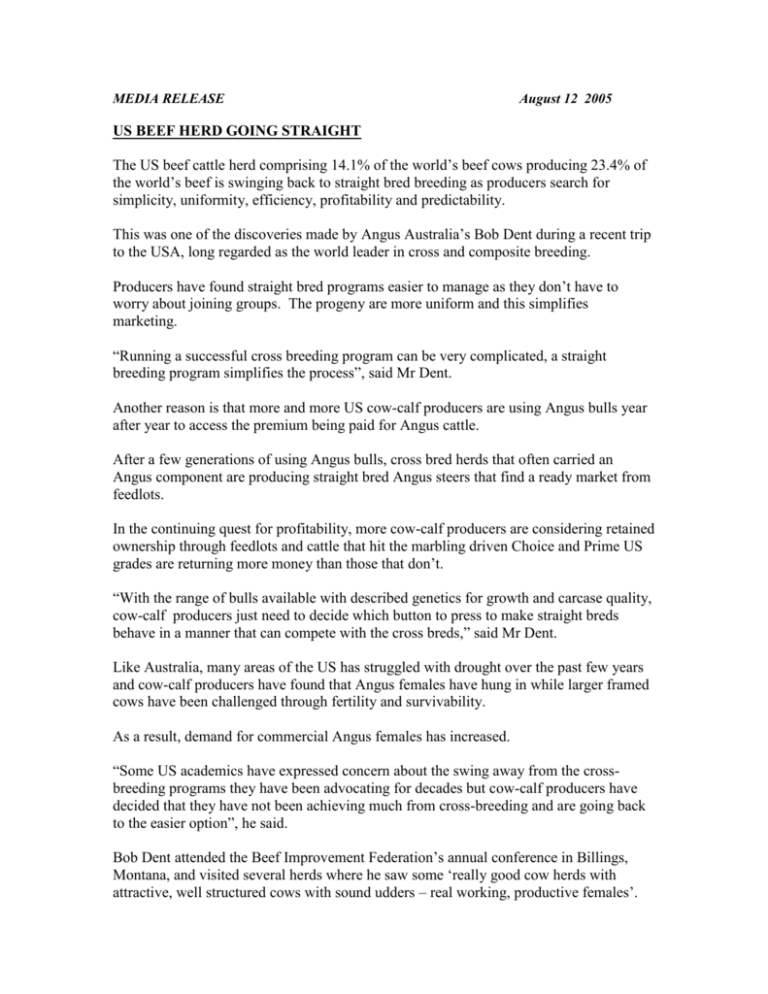
MEDIA RELEASE August 12 2005 US BEEF HERD GOING STRAIGHT The US beef cattle herd comprising 14.1% of the world’s beef cows producing 23.4% of the world’s beef is swinging back to straight bred breeding as producers search for simplicity, uniformity, efficiency, profitability and predictability. This was one of the discoveries made by Angus Australia’s Bob Dent during a recent trip to the USA, long regarded as the world leader in cross and composite breeding. Producers have found straight bred programs easier to manage as they don’t have to worry about joining groups. The progeny are more uniform and this simplifies marketing. “Running a successful cross breeding program can be very complicated, a straight breeding program simplifies the process”, said Mr Dent. Another reason is that more and more US cow-calf producers are using Angus bulls year after year to access the premium being paid for Angus cattle. After a few generations of using Angus bulls, cross bred herds that often carried an Angus component are producing straight bred Angus steers that find a ready market from feedlots. In the continuing quest for profitability, more cow-calf producers are considering retained ownership through feedlots and cattle that hit the marbling driven Choice and Prime US grades are returning more money than those that don’t. “With the range of bulls available with described genetics for growth and carcase quality, cow-calf producers just need to decide which button to press to make straight breds behave in a manner that can compete with the cross breds,” said Mr Dent. Like Australia, many areas of the US has struggled with drought over the past few years and cow-calf producers have found that Angus females have hung in while larger framed cows have been challenged through fertility and survivability. As a result, demand for commercial Angus females has increased. “Some US academics have expressed concern about the swing away from the crossbreeding programs they have been advocating for decades but cow-calf producers have decided that they have not been achieving much from cross-breeding and are going back to the easier option”, he said. Bob Dent attended the Beef Improvement Federation’s annual conference in Billings, Montana, and visited several herds where he saw some ‘really good cow herds with attractive, well structured cows with sound udders – real working, productive females’. “These cows are operating in grass fed environments and need to survive and economically produce a calf each year which is no different to what we require of them in Australia”, he said. At the BIF conference, the advice for cow-calf producers was to identify market segments where sustainable profits could be generated and keep production costs down. All segments of the US beef industry are experiencing excellent demand and prices but market analysts are predicting a slump in the 2009-10 period following herd build up and over supply. Targeting branded beef production was one major strategy recommended to remove some of the risk. Producers were challenged to decide where they fitted in the supply chain. Were they basic commodity producers exposed to market variables or were they prepared to become high quality branded product producers delivering consumer satisfaction leading to more sales and premium prices? Branded products at present account for 10% of the beef produced in the US and predictions are this top end market area will grow. The 53 branded beef programs certified by the US Department of Agriculture include 36 or 66% that use the name Angus. Certified Angus Beef accounts for 80% of the branded products sold that have modest and above marbling. NOTE: Electronic photo of Bob Dent available on request. From: Angus Australia. Media contact Geoff Phillips phone (03) 9431 1522 or 0411 413 599, fax (03) 9431 1864, or email geoffphi@ozemail.com.au. You can find all the Angus Society’s press releases on www.angusaustralia.com.au
